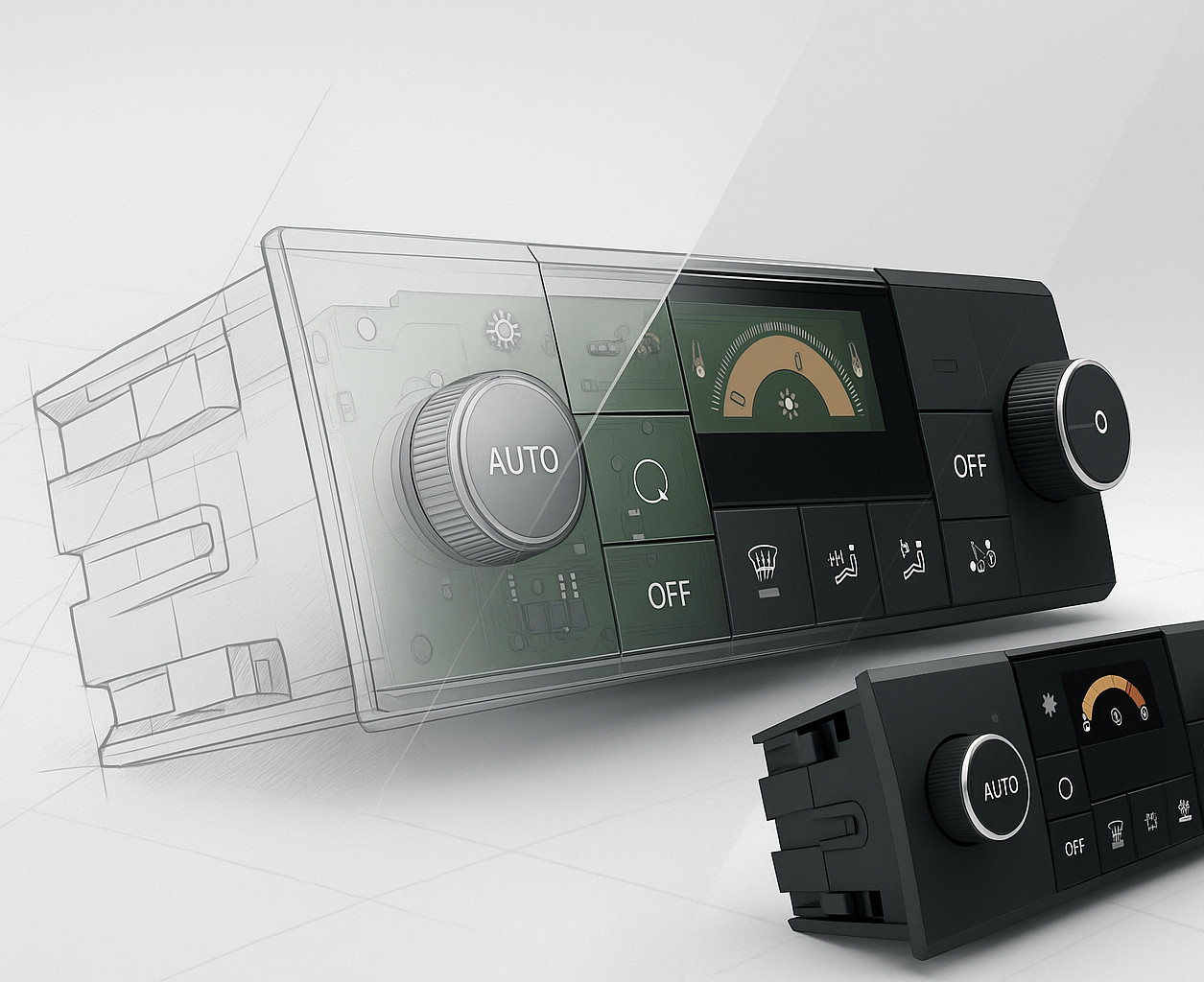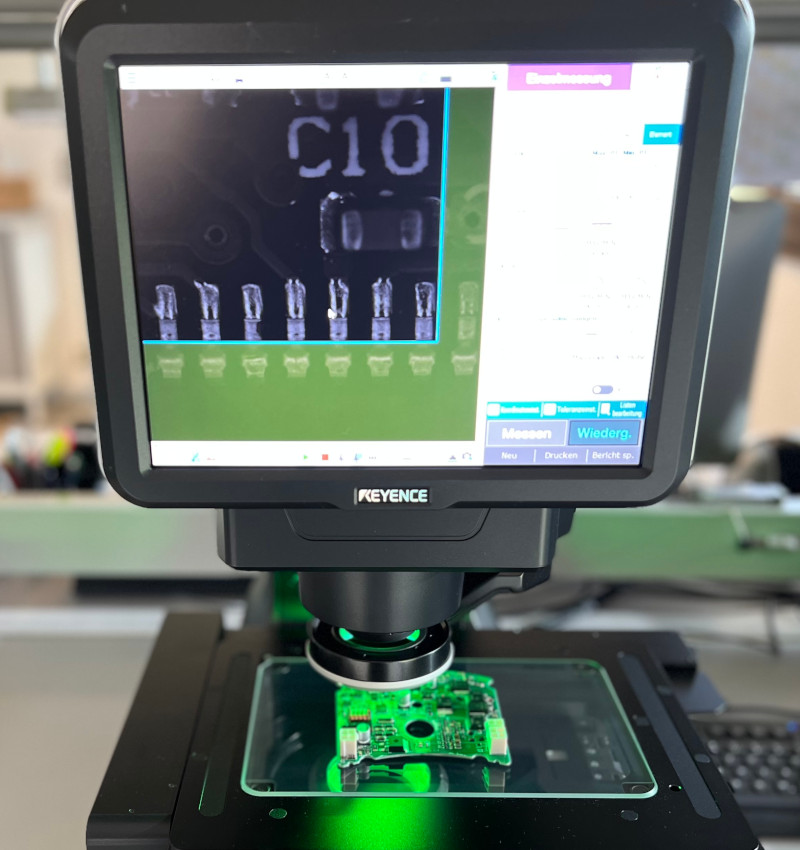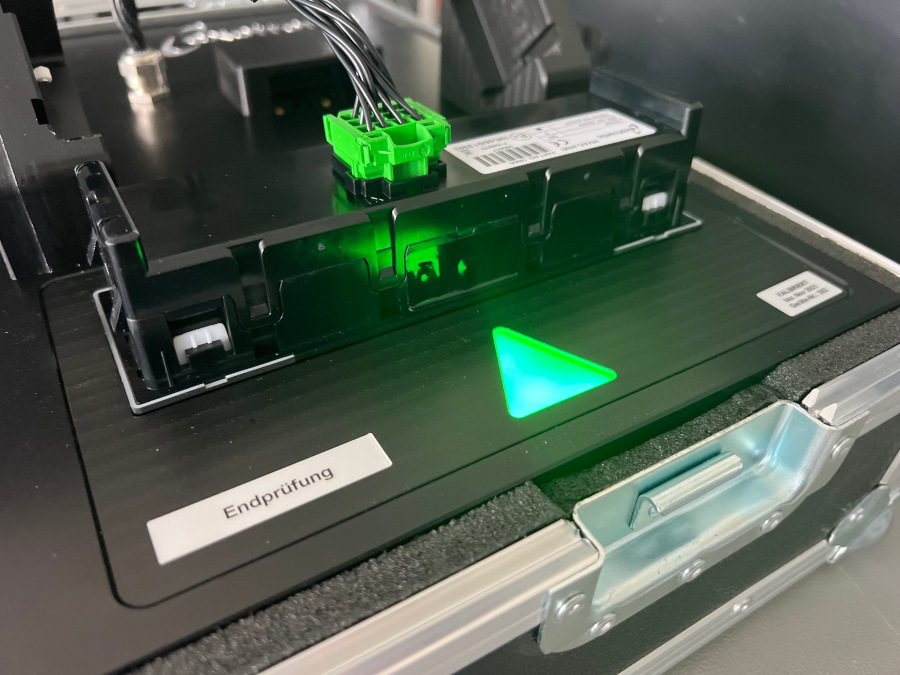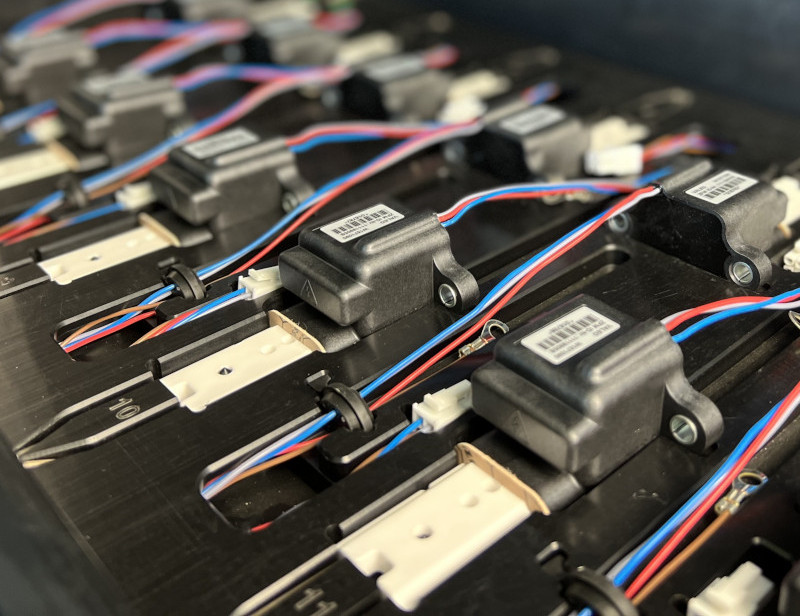 |

|
Development process
Our developments largely begin with a requirements specification in which all the product requirements, environmental conditions and test parameters are specified.
We derive a circuit diagram and simultaneously construct the associated mechanics based on this. First prototypes, called A Sample, are built and validated.
Afterwards, any deviations are to be identified and rectified through suitable measures. B Sample are built as a result.
The validation process is repeated and any tools needed for injection-moulded casing or stamped parts are ordered.
Once they are available, the C Sample – which must be manufactured under serial conditions – can be produced.
All the tests are then repeated for these models; external tests such as EMC and vibration tests are also carried out.
If they are all passed, a first sample and a first sample test report can be created, which will then trigger the start of production (SOP) after approval by the customer.
|
|  |
 |
Precision
Our products are measured during the development process using an optical coordinate measurement system from Keyence in order to be able to compare the targeted result and the actual result. It’s only when all measured lengths are within a defined range that a component can be approved. The measuring instrument is also used during the initial sampling process.
In addition, we also use the properties of contactless and high-precision measuring for inspecting the product-specific stamped or injection-moulded parts of incoming goods.
|

|
|  |
 |

|
Moving to serial production
Product-specific auxiliary devices are needed in order to be able to manufacture products in greater numbers and at consistent levels of quality. This could be a soldering frame, which specifies the exact position of flat contacts and other THT parts or pneumatic die cutters for pressing in reinforcing sleeves: see illustration on the left. Component carriers are also required for CNC-controlled pouring in order to be able to precisely position the components to be poured.
|
|  |
 |
Label
All products must have a label. A unique part designation and a unique serial number in the form of a barcode or QR code are the basic parts of every label. In addition, any standards met, warning information or technical information can also be shown.
We produce the labels exclusively using the thermal transfer printing process. The process ensures maximum chemical resistance and legibility, even after many years of rough everyday use.
|

|
|  |
 |

|
100 % testing
Each of our serial products is tested before delivery to the customer. A customer-specific end-of-line testing device that automatically tests and documents nearly every function is developed and produced specifically for this. This way we can ensure that only 100% tested and faultless products leave the premises.
The cost of the testing device varies greatly depending on the range of functions and the annual production volume.
|
|  |
 |
Reusable packaging
For the sake of the environment.
We already ship 90% of our products in reusable product-specific packaging. For this purpose, Euro containers are fitted with milled inserts made from foam or plastic so that the components can be transported safely. Maximum component density, ease of removal and the protection of delicate components are all important criteria when making the inserts.
The empty reusable containers are collected and either collected by us or returned to us.
|

|

|
|
 |
|
Copyright © 2025 Exotronic GmbH. All rights reserved.
info@exotronic.de | +49 (0) 39605 279 0 | Schwarzer Weg 2 | 17094 Groß Nemerow | Germany
Data protection
Imprint
|
|
Development process

Our developments largely begin with a requirements specification in which all the product requirements, environmental conditions and test parameters are specified.
We derive a circuit diagram and simultaneously construct the associated mechanics based on this. First prototypes, called A Sample, are built and validated.
Afterwards, any deviations are to be identified and rectified through suitable measures. B Sample are built as a result.
The validation process is repeated and any tools needed for injection-moulded casing or stamped parts are ordered.
Once they are available, the C Sample – which must be manufactured under serial conditions – can be produced.
All the tests are then repeated for these models; external tests such as EMC and vibration tests are also carried out.
If they are all passed, a first sample and a first sample test report can be created, which will then trigger the start of production (SOP) after approval by the customer.
|
|
Precision

Our products are measured during the development process using an optical coordinate measurement system from Keyence in order to be able to compare the targeted result and the actual result. It’s only when all measured lengths are within a defined range that a component can be approved. The measuring instrument is also used during the initial sampling process.
In addition, we also use the properties of contactless and high-precision measuring for inspecting the product-specific stamped or injection-moulded parts of incoming goods.
|
|
Moving to serial production

Product-specific auxiliary devices are needed in order to be able to manufacture products in greater numbers and at consistent levels of quality. This could be a soldering frame, which specifies the exact position of flat contacts and other THT parts or pneumatic die cutters for pressing in reinforcing sleeves: see illustration on the left. Component carriers are also required for CNC-controlled pouring in order to be able to precisely position the components to be poured.
|
|
Label

All products must have a label. A unique part designation and a unique serial number in the form of a barcode or QR code are the basic parts of every label. In addition, any standards met, warning information or technical information can also be shown.
We produce the labels exclusively using the thermal transfer printing process. The process ensures maximum chemical resistance and legibility, even after many years of rough everyday use.
|
|
100 % testing

Each of our serial products is tested before delivery to the customer. A customer-specific end-of-line testing device that automatically tests and documents nearly every function is developed and produced specifically for this. This way we can ensure that only 100% tested and faultless products leave the premises.
The cost of the testing device varies greatly depending on the range of functions and the annual production volume.
|
|
Reusable packaging
For the sake of the environment.

We already ship 90% of our products in reusable product-specific packaging. For this purpose, Euro containers are fitted with milled inserts made from foam or plastic so that the components can be transported safely. Maximum component density, ease of removal and the protection of delicate components are all important criteria when making the inserts.
The empty reusable containers are collected and either collected by us or returned to us.

|
|
Copyright © 2025 Exotronic GmbH. All rights reserved.
info@exotronic.de | +49 (0) 39605 279 0 | Schwarzer Weg 2 | 17094 Groß Nemerow | Germany
Data protection
Imprint
|













 Deutsch
Deutsch






